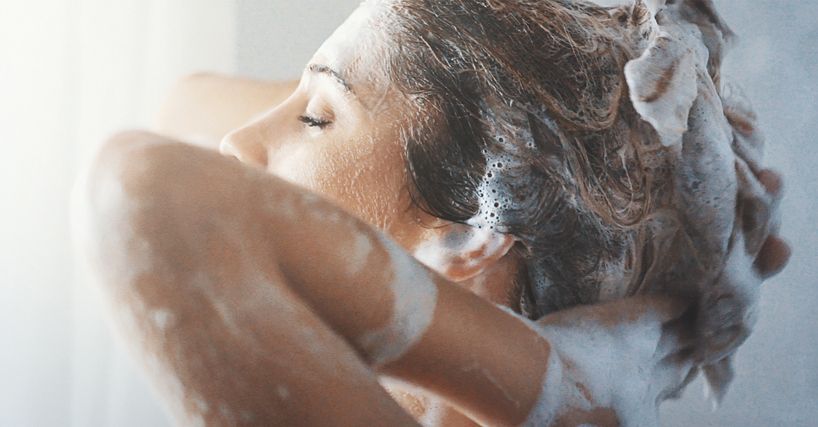Author: Natalie Ng|Updated: 12 May 2025
Clearing closed comedones doesn’t have to come at the cost of your skin barrier. It really comes down to keeping things simple and gentle. A mild cleanser that won’t strip your skin helps clear away buildup while keeping moisture in. Adding something like salicylic acid can make a big difference too — it helps remove dead skin cells and clears out clogged pores without being too harsh. To keep your skin balanced, look for ingredients like niacinamide, ceramides, and hyaluronic acid. They help soothe irritation, lock in hydration, and support sensitive skin without making breakouts worse. It’s best to avoid scrubbing, over-cleansing, or picking at bumps — these only lead to redness, irritation, and sometimes scarring. Non-comedogenic products are a safer choice since they won’t clog pores or trigger more acne. If you’re trying to treat closed comedones without making your skin freak out, keep reading. We’ll break down what’s happening beneath the surface and how to deal with it in a way that works long term.

What Causes Closed Comedones?
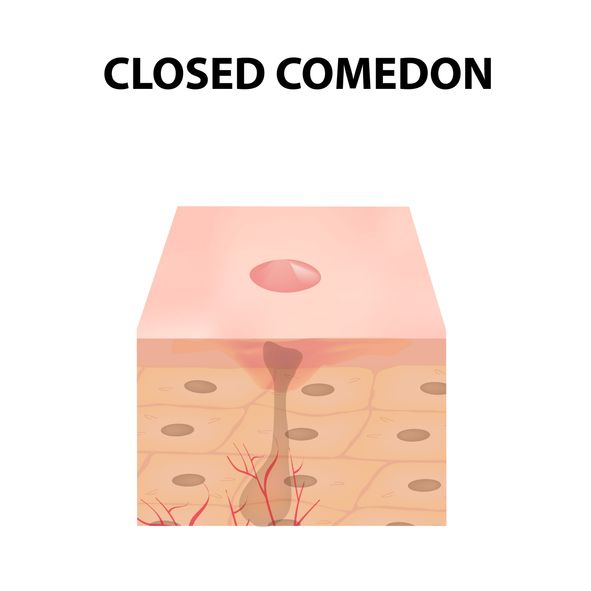
Buildup inside pores
Closed comedones form when dead skin cells, excess oil, and bacteria get trapped inside your hair follicles. This creates a blockage just beneath the skin’s surface. Unlike blackheads, these bumps are sealed off, so they stay white or flesh-toned and don’t turn black from air exposure.
Increased oil and dead skin
Excess oil from the sebaceous glands mixes with dead skin cells and clogs the pores. This usually happens in areas with higher oil production like the forehead, nose, and chin. If the pore stays closed, the buildup becomes a closed comedone.
Hormonal shifts
Changes in hormones, especially the male sex hormone, can lead to increased sebum production. This often triggers more clogged pores and small bumps. These shifts are common during puberty, before your period, or from certain medications.
Product buildup and heavy ingredients
Skincare or makeup that’s too thick or contains pore-clogging ingredients like coconut oil or isopropyl myristate can block the pores. Even some over the counter products can contribute if they’re not suited for acne-prone or sensitive skin.
Sweat and poor cleansing
Sweat that sits too long on the skin without proper cleansing can mix with oils and bacteria, creating more buildup. This is especially common after workouts or during hot weather.
Genetics
A genetic predisposition may increase the chance of developing comedonal acne. If acne runs in your family, you might notice more closed comedones, even with a solid skincare routine.

Skin Barrier’s Impact on Acne
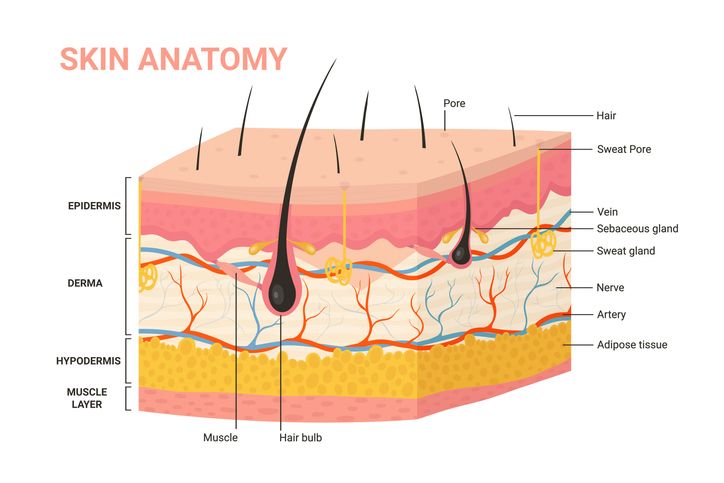
Why a Healthy Skin Barrier Reduces Breakouts
Your skin barrier protects against bacteria, dirt, and pore-clogging debris while holding in moisture. When it stays strong, it helps balance oil levels, encourages healthy skin cell turnover, and keeps pores clear. This reduces the chance of closed comedones and inflammatory acne.
If the barrier becomes weak — from harsh skincare, over-cleansing, or scrubbing — the skin reacts. Oil glands may produce more sebum, pores clog more easily, and small bumps can appear and spread.
Strong Barrier Fights Bacteria
A strong skin barrier helps stop acne-causing bacteria from spreading. It supports the skin’s natural pH and allows antimicrobial lipids and peptides to work effectively. These defenses lower the chance of bacteria getting trapped inside clogged pores.
If skin becomes too dry, oil glands often try to compensate with increased sebum production, which adds to congestion. Keeping the barrier intact helps manage oil and reduce the chance of future breakouts.
Moisture Balance Prevents Breakouts
Dryness and overhydrated skin both lead to problems. Dry skin can trigger excess oil, while too much moisture — from rich creams or humid conditions — can trap bacteria. Both situations increase clogged pores and comedonal acne.
Lightweight, non-comedogenic moisturizers with ingredients like hyaluronic acid and glycerin help support moisture balance. Avoid thick, pore-clogging ingredients like coconut oil and isopropyl myristate, especially if you have sensitive or acne-prone skin.
Read More
Book Now to Experience
Acne Treatment
1 Minute Self-Registration
Date should not be before minimal date

Cleansing Methods That Protect the Skin Barrier
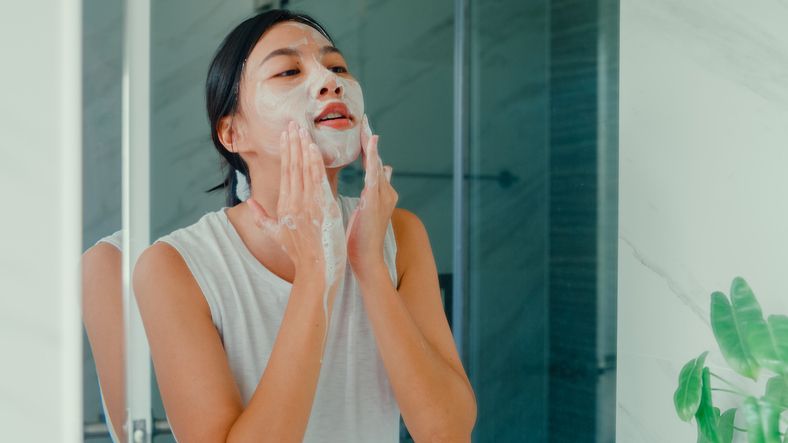
Why Harsh Cleansing Makes Comedones Worse
Washing your face the wrong way can damage the skin barrier and trigger more breakouts. Harsh cleansers strip away natural oils, leaving skin dry, irritated, and more likely to produce excess oil. This can clog pores and lead to closed comedones, especially if dead skin cells build up on the surface.
Avoid using foaming cleansers with sulfates or high pH formulas. These disrupt the skin’s balance and make it harder for the barrier to recover.
Best Way to Cleanse Without Irritation
Stick to a sulfate-free, non-comedogenic cleanser made for your skin type. Use lukewarm water and apply it gently with your fingertips — no scrubbing, brushes, or rough cloths. Rinse thoroughly and pat dry with a clean, soft towel.
Washing once or twice a day is enough. Over-cleansing can strip the skin and lead to increased sebum production, which contributes to clogged pores and comedonal acne.
Using Double Cleansing to Clear Pores
If you wear sunscreen or makeup, double cleansing can help unclog pores without damaging the barrier. Start with an oil-based cleanser to break down surface buildup, followed by a gentle water-based cleanser to remove residue. This method removes oils and debris while staying barrier-friendly, making it a good option for treating closed comedones without irritation.

Ingredients That Safely Treat Closed Comedones
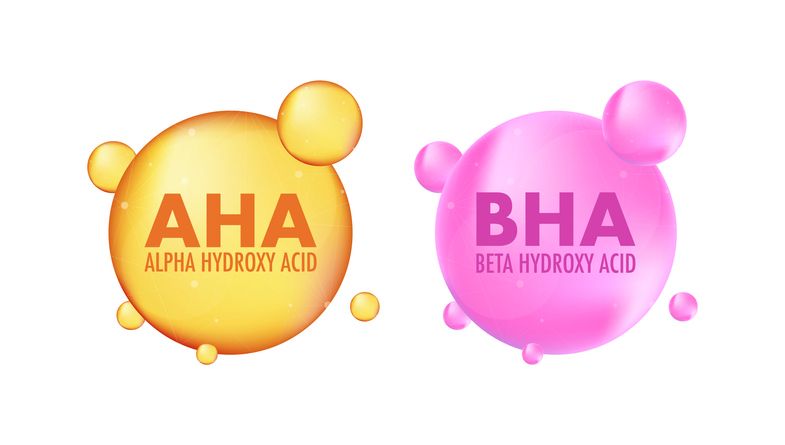
Exfoliants That Clear Pores Without Damage
Chemical exfoliants help remove dead skin cells, unclog pores, and prevent buildup that leads to closed comedones. They’re a safer option than scrubs, which can cause irritation and push bacteria deeper into the skin.
• Salicylic acid (BHA): Penetrates oil and clears inside the pores. A 1–2% concentration works well for most skin types, especially in comedonal acne.
• Glycolic acid (AHA): Targets dead skin on the surface and boosts cell turnover. A 5–7% strength is effective for removing buildup without overdoing it.
• Lactic acid and PHAs: Gentler acids that work well for sensitive skin or if your barrier is already compromised.
• Mandelic acid: Slower-acting due to its larger molecule size, making it a good choice for gradual exfoliation.
Start with lower concentrations and space applications out to avoid irritation. Overuse can damage the barrier and increase inflammation.
Lightweight Moisturizers That Don’t Clog Pores
Oil-free moisturizers help protect the skin barrier without adding congestion. They hydrate the skin, reduce flakiness, and prevent the overproduction of oil triggered by dryness.
Look for humectants like:
• Hyaluronic acid
• Glycerin
• Panthenol
These ingredients pull water into the skin without leaving a heavy layer. Choose products labeled non-comedogenic and avoid rich creams that contain coconut oil, shea butter, or isopropyl myristate.
Apply moisturizer after cleansing and before applying active treatments. This helps protect the skin barrier while allowing actives to work more effectively.
Anti-Inflammatory Ingredients That Soothe Skin
Calming agents reduce redness, support healing, and help stop the cycle of irritation and clogged pores. These ingredients are especially helpful if your skin is sensitive or already inflamed.
• Niacinamide (Vitamin B3): Reduces oil production, calms redness, and strengthens the barrier.
• Green tea extract: Contains antioxidants and polyphenols that reduce inflammation.
• Aloe vera: Soothes and hydrates without clogging pores.
• Centella Asiatica: Boosts skin recovery and has anti-inflammatory benefits.
These ingredients work well alongside exfoliants and retinoids to keep your skin balanced and calm while treating closed comedones.
Book Now to Experience
Acne Treatment
1 Minute Self-Registration
Date should not be before minimal date

Building a Routine That Supports the Skin Barrier
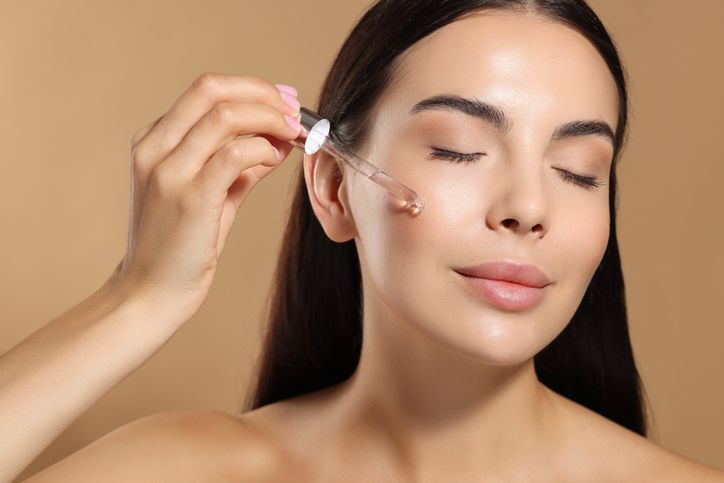
1. Cleanse Without Stripping the Skin
Use a pH-balanced, sulfate-free cleanser that matches your skin type. Cleanse once or twice daily with lukewarm water to avoid drying out your skin or triggering excess oil production. Skip scrubs or cleansing tools — they can damage the barrier and make clogged pores worse.
2. Add Lightweight Hydration
After cleansing, apply a toner or serum with humectants like glycerin or hyaluronic acid. These ingredients pull water into the skin and keep it hydrated without making it feel greasy. Avoid alcohol-based products that can weaken the skin’s barrier.
3. Apply Actives Gradually
Introduce active ingredients like salicylic acid, azelaic acid, or adapalene slowly. Start a few times per week to help your skin adjust. If you’re using stronger treatments like tretinoin, apply a thin layer of moisturizer first to reduce the chance of irritation.
Use barrier-friendly products like ceramide creams or squalane-based serums between or after actives to support recovery and reduce inflammation.
4. Protect with Sunscreen
Use sunscreen daily to protect your skin from UV damage, which weakens the barrier and worsens comedonal acne. Choose a lightweight, non-comedogenic formula. Gel or water-based sunscreens are ideal if your skin is prone to breakouts.

Prevention Strategies for Long-Term Skin Health
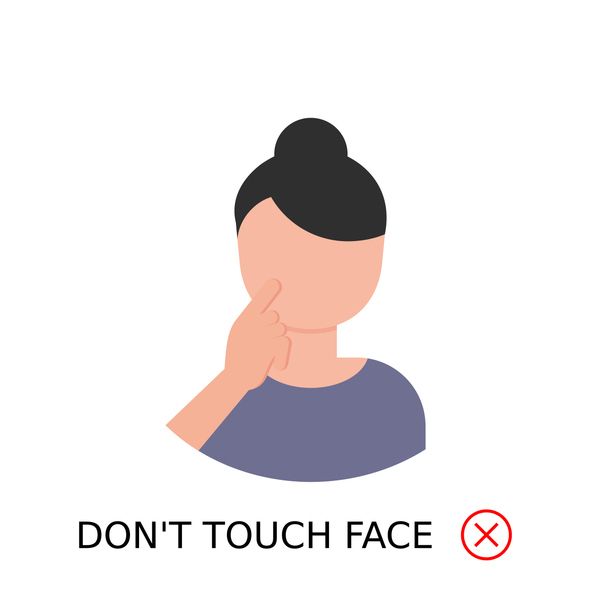
1. Keep Surfaces That Touch Your Face Clean
Pillowcases, phone screens, and anything that touches your face often can transfer bacteria, oils, and dirt to your skin. Wash pillowcases at least twice a week and clean your phone screen daily. These small habits help prevent clogged pores and breakouts.
2. Avoid Touching Your Face
Touching your face transfers bacteria and oils from your hands directly onto your skin. This can clog pores, especially if you're already dealing with excess oil or sensitive skin. Always wash your hands before applying any skin care products.
3. Use Non-Comedogenic Products
Make sure everything that goes on your face — from moisturizers and sunscreens to makeup and hair care — is labeled non-comedogenic. Ingredients like coconut oil or heavy butters can block pores and make closed comedones worse.
4. Pay Attention to Environmental Triggers
Humidity, heat, pollution, and even your diet can affect your skin. Increased sebum production from these factors may lead to clogged pores. Keep track of flare-ups to help identify patterns, whether they’re tied to weather changes, dairy products, or other triggers.
Book Now to Experience
Acne Treatment
1 Minute Self-Registration
Date should not be before minimal date

Common Mistakes That Worsen Closed Comedones
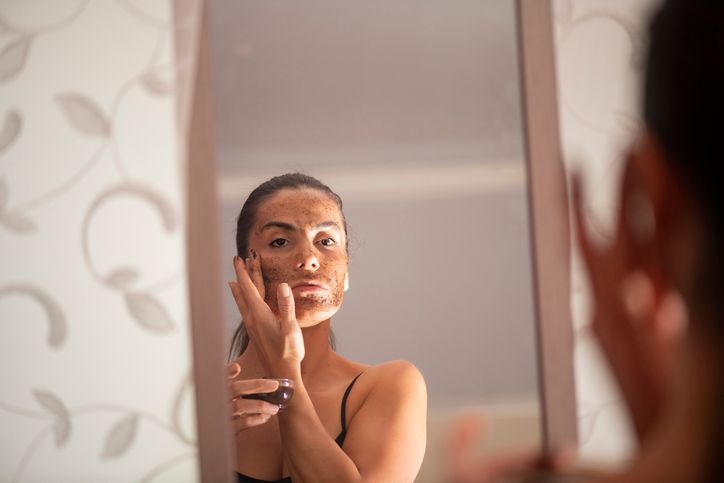
1. Over-Exfoliating or Using Scrubs
Scrubbing the skin or using harsh exfoliants can cause tiny tears and push bacteria deeper into the pores. This irritates the skin and increases the risk of inflammation, which can turn closed comedones into inflamed acne or pustules.
Stick to gentle chemical exfoliants like salicylic acid or mandelic acid. Avoid anything with rough particles or strong acids applied too often.
2. Using Too Many Active Ingredients
Layering multiple active ingredients — like retinoids, acids, and benzoyl peroxide — can overwhelm the skin. This weakens the barrier and leads to irritation, redness, and more clogged pores.
Start slow with one or two targeted treatments. Let your skin adjust before adding anything new.
3. Picking or Squeezing Bumps
Trying to pop or squeeze closed comedones often makes things worse. It can cause scarring, inflammation, and push the contents deeper into the skin, leading to larger breakouts.
Leave extraction to a board certified dermatologist if needed. At home, focus on treatments that unclog pores gradually without damaging the skin.
4. Using Drying Products
Harsh spot treatments or alcohol-heavy products might seem like a quick fix, but they dry out the skin and damage the barrier. This can trigger more oil production and cause more clogged pores over time.
Choose barrier-friendly treatments and moisturizers that soothe and hydrate while treating acne.

Signs Your Treatment Plan Is Working

1. Smoother Skin Texture
One of the first signs that your treatment is working is smoother skin. When you run your fingers over areas that had small bumps, you'll notice fewer raised spots. This means your pores are clearing and dead skin cells are no longer building up at the surface.
2. Fewer New Closed Comedones
If you're seeing fewer new whiteheads or small bumps forming, your skincare routine is helping prevent clogged pores. This shows that oil production is more balanced and your products aren’t causing new congestion.
3. Less Congestion Around Pores
As your pores start to clear, they’ll look and feel less blocked. You may notice that open comedones (blackheads) reduce in number as well, especially around the forehead and nose. This is a good sign that your exfoliants and topical treatments are working.
4. More Even Skin Tone
As inflammation fades and bumps flatten, your overall skin tone will start to look more even. Redness, post-breakout marks, and areas of irritation will slowly improve as your skin barrier heals and cell turnover stays balanced.
Book Now to Experience
Acne Treatment
1 Minute Self-Registration
Date should not be before minimal date

Why Some Closed Comedones Don’t Go Away with Skincare Alone
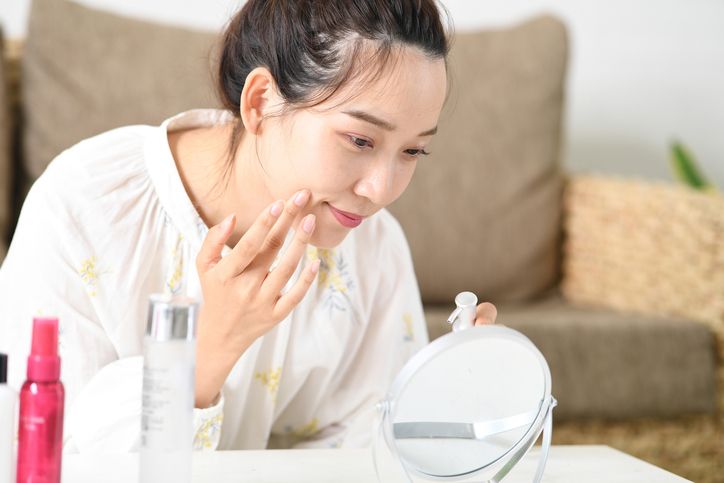
Limits of At-Home Skincare
Even with the right skincare routine — gentle cleansers, salicylic acid, niacinamide, and non-comedogenic products — some closed comedones can remain. This often happens when buildup inside the pores becomes too deep or compacted. Over time, dead skin cells, sebum, and bacteria become trapped below the skin’s surface, especially in areas with active oil glands like the forehead, chin, and nose.
These closed bumps can stay under the skin for weeks or even months. Without a way to fully unclog the pore, they don’t always respond to over the counter products. In some cases, they harden or turn into inflamed pimples or pustules, making them harder to treat without irritation.
Why Deeper Pore Cleansing Helps
Topical treatments like salicylic acid or adapalene work by increasing cell turnover and dissolving blockages, but they take time and can’t always reach deeply embedded clogs. This is especially true for people with slower skin renewal, genetic predisposition to comedonal acne, or those whose skin reacts easily to strong actives.
In these cases, professional treatments that can remove dead skin cells and unclog pores more thoroughly are a helpful next step. That’s where options like The Acne Treatment come in — giving the skin a reset and supporting the barrier while addressing deeper buildup.

How The Acne Treatment Helps Clear Closed Comedones More Effectively
The Acne Treatment for Stubborn, Congested Skin
If your daily routine isn’t enough to treat closed comedones, The Acne Treatment offers deeper support. This treatment is made for acne-prone and sensitive skin, targeting common causes like excess oil, dead skin cells, and blocked hair follicles. It helps clear comedonal acne without irritating the skin.
How The Acne Treatment Works
The treatment begins with dual spiral suction and drainage that exfoliates the skin’s surface and unclogs pores. This step removes dead skin cells, excess sebum, and buildup from within the pores. As debris clears, inflammation starts to calm and the skin becomes more balanced.
Next, a medical-grade hydrating serum is infused into the skin. This helps restore the water-oil balance, calm sebaceous glands, and support collagen production. Together, these steps reduce breakouts, improve skin texture, and help prevent future closed comedones from forming.
Why The Acne Treatment Supports Better Results
The Acne Treatment works well with topical treatments like salicylic acid, azelaic acid, or topical retinoids. By clearing out the pore blockages that slow those ingredients down, the treatment helps your products work more effectively. It’s also non-invasive and gentle, so it won’t disrupt your skin barrier or trigger more breakouts.
Key Benefits
• Clears clogged pores and removes dead skin cells
• Reduces oil buildup and calms inflamed skin
• Boosts hydration with medical-grade ingredients
• Soothes sensitive, acne-prone skin
• Non-invasive and safe for regular use
If you’re dealing with closed comedones and need more than just products — book your consultation for The Acne Treatment today and give your skin the support it needs to clear up for good.
New Beauty's Acne TreatmentBook Now to Experience
Acne Treatment
1 Minute Self-Registration
Date should not be before minimal date
FAQ
1. Can diet and dairy products cause closed comedones?
Yes, diet — especially dairy products — can influence the development of closed comedones for some people. Certain types of dairy may affect hormone levels, triggering increased sebum production and clogged pores. Foods high in sugar or with a high glycemic index can also contribute to excess oil and acne breakouts. If you notice your skin reacting after eating specific foods, it may help to keep a food diary and adjust your intake.
2. What’s the difference between closed comedones and pustules?
Closed comedones are small, flesh-colored bumps caused by blocked pores filled with oil and dead skin cells. They’re non-inflammatory and stay under the skin's surface. Pustules, on the other hand, are inflamed acne lesions that appear red with a white or yellow center filled with pus. While closed comedones can turn into pustules if bacteria multiply inside clogged pores, the two are different stages of acne.
3. Are topical retinoids safe for sensitive skin?
Topical retinoids like adapalene and tretinoin are effective for treating comedonal acne and improving cell turnover, but they can irritate sensitive skin — especially in the first few weeks. If you have sensitive skin, start with a low concentration and apply it every other night. Pair it with a barrier-repair moisturizer and avoid using other strong actives like exfoliants on the same days. Always use sunscreen, as retinoids can make your skin more prone to sun damage.
4. Can sunscreen clog pores and make acne worse?
Yes, some sunscreens can clog pores, especially those that are thick, oily, or contain comedogenic ingredients. To avoid this, choose a sunscreen labeled “non-comedogenic” and oil-free. Gel-based or water-based formulas are usually better for oily and acne-prone skin. Using the right sunscreen daily is important for protecting against sun damage without worsening breakouts or closed comedones.
5. Does overhydrated skin lead to closed comedones?
Yes, overhydrated skin — often caused by using heavy creams or applying too many layers of product — can create a moist environment where bacteria thrive. When this combines with trapped oils and dead skin cells, it can contribute to clogged pores and lead to closed comedones. Stick to lightweight, non-comedogenic products, and avoid layering too many occlusive products if your skin already feels greasy or congested.
Recommended Articles
COPYRIGHT© NEW BEAUTY MANAGEMENT LIMITED 2025. ALL RIGHT RESERVED.

